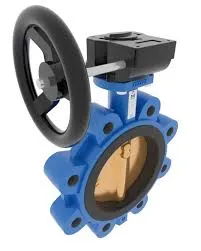10 月 . 30, 2024 23:22 Back to list
rubber check valve
Understanding Rubber Check Valves Function, Types, and Applications
Rubber check valves are essential components commonly used in fluid control systems. They serve a crucial role in preventing backflow, thereby ensuring that fluids flow in the intended direction. This article explores the function, types, and various applications of rubber check valves, highlighting their importance in multiple industries.
Function of Rubber Check Valves
The primary function of a check valve, including rubber variants, is to maintain unidirectional flow in a pipeline. By allowing fluid to pass through in one direction while preventing it from returning, these valves safeguard systems from the destructive effects of backpressure, which can lead to contamination, flooding, or system failure. Rubber check valves utilize the elasticity and resilience of rubber materials to create a seal, which opens under forward flow pressure and closes when the flow reverses.
Types of Rubber Check Valves
There are several types of rubber check valves, each designed for specific applications and fluid types
1. Swing Check Valves These valves feature a hinged disc that swings open under forward flow and closes under reverse flow. They are commonly used in water supply systems and wastewater treatment facilities.
2. Lift Check Valves Lift check valves function by moving the disc vertically. As fluid flows in the forward direction, it lifts the disc, allowing fluid passage, while reverse flow causes the disc to fall back into its seat, sealing off the pipe.
3. Ball Check Valves In these valves, a ball made of rubber or another elastomer sits within a conical seat. Forward flow pushes the ball away from the seat, while reverse flow pushes it back into place, effectively blocking backflow.
rubber check valve

Each of these designs has unique benefits and is suited for different operational conditions, making them versatile components in fluid systems
.Applications of Rubber Check Valves
Rubber check valves find extensive applications across various industries
- Water and Wastewater Management They are crucial in municipal water supply systems to prevent backflow, ensuring safe and clean water distribution. In wastewater treatment plants, these valves help manage the flow of effluent and prevent contamination of clean water sources.
- Chemical Processing In the chemical industry, rubber check valves are used to control the flow of aggressive chemicals and prevent cross-contamination between different chemical streams.
- Food and Beverage Processing The food industry employs rubber check valves to ensure hygiene and prevent backflow that could lead to contamination of edible products.
- HVAC Systems In heating, ventilation, and air conditioning systems, rubber check valves help prevent the return of condensate and maintain system efficiency.
Conclusion
In conclusion, rubber check valves are vital components in a multitude of applications, renowned for their ability to prevent backflow and ensure fluid systems operate efficiently and safely. Their diverse designs cater to various operational needs, making them integral to industries like water management, chemical processing, food and beverage production, and HVAC systems. Understanding their function and applications can help engineers and technicians select the right type of check valve for their specific needs, ultimately improving the reliability and safety of fluid control systems.
Share
-
Understanding the Differences Between Wafer Type Butterfly Valve and Lugged Butterfly ValveNewsOct.25,2024
-
The Efficiency of Wafer Type Butterfly Valve and Lugged Butterfly ValveNewsOct.25,2024
-
The Ultimate Guide to Industrial Swing Check Valve: Performance, Installation, and MaintenanceNewsOct.25,2024
-
Superior Performance with Industrial Swing Check Valve: The Essential Valve for Any SystemNewsOct.25,2024
-
Industrial Swing Check Valve: The Ideal Solution for Flow ControlNewsOct.25,2024
-
You Need to Know About Industrial Swing Check Valve: Functionality, Scope, and PerformanceNewsOct.25,2024